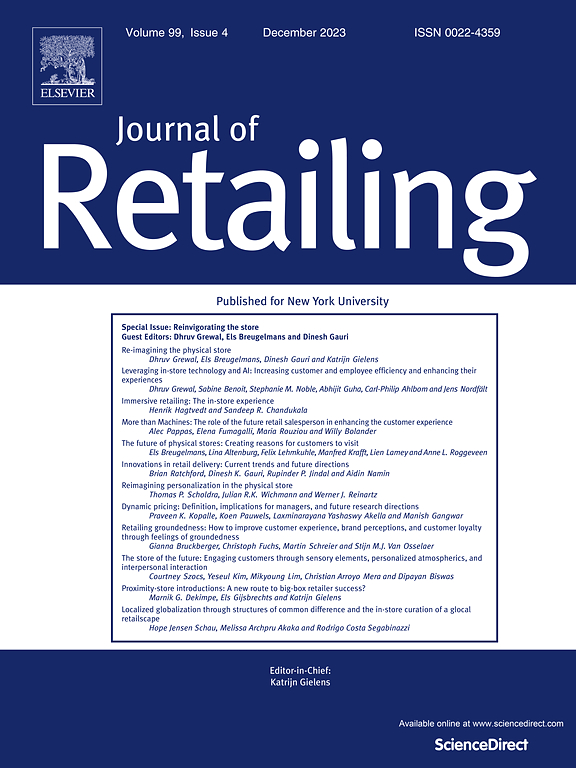Getting the most for a penny: How retailers can best use left-digit effects
IF 10.2
1区 管理学
Q1 BUSINESS
引用次数: 0
Abstract
When designing price promotions, many retailers employ left-digit effects (i.e., when the price is reduced, it changes the leftmost digit of the price). While left-digit effects can influence consumer evaluations, there is little work that examines for which (i) segments of consumers, or (ii) types of managerially relevant display elements are left-digit changes more effective. This paper builds from the insight that the left-digit effect is a heuristic and then—building from work on heuristics—uses multiple studies to examine individual differences and contextual factors that can enhance the effectiveness of price promotions involving left-digit changes. This paper examines an important substantive domain—price promotions—and proposes contributions to both theory and practice by showing that left-digit effects are stronger (i) for consumer segments that rely more on their feelings when making decisions, (ii) when the retail signage induces arousal, and (iii) when retail signage does not indicate the actual percentage discount. Put another way, noting that left-digit effects can be triggered by merely changing prices by a penny or so, this paper outlines how retailers can “get the most for that penny.”

物有所值:零售商如何最好地利用左数字效应
在设计价格促销时,许多零售商采用左数字效应(即,当价格降低时,它会改变价格的最左边数字)。虽然左数字效果可以影响消费者的评价,但很少有工作检查(i)消费者细分,或(ii)管理相关显示元素的类型是左数字变化更有效。本文从左数效应是一种启发式的见解出发,然后从启发式的工作出发,使用多项研究来检查个体差异和环境因素,这些因素可以提高涉及左数变化的价格促销的有效性。本文研究了一个重要的实质性领域——价格促销,并通过显示左数字效应更强(i)对于在做决定时更依赖于他们的感觉的消费者群体,(ii)当零售标牌引起兴奋时,(iii)当零售标牌没有显示实际折扣百分比时,提出了理论和实践的贡献。换句话说,注意到左数字效应可以通过仅仅改变一便士左右的价格来触发,这篇论文概述了零售商如何“用那一便士得到最多的东西”。
本文章由计算机程序翻译,如有差异,请以英文原文为准。
求助全文
约1分钟内获得全文
求助全文
来源期刊

Journal of Retailing
BUSINESS-
CiteScore
15.90
自引率
6.00%
发文量
54
审稿时长
67 days
期刊介绍:
The focus of The Journal of Retailing is to advance knowledge and its practical application in the field of retailing. This includes various aspects such as retail management, evolution, and current theories. The journal covers both products and services in retail, supply chains and distribution channels that serve retailers, relationships between retailers and supply chain members, and direct marketing as well as emerging electronic markets for households. Articles published in the journal may take an economic or behavioral approach, but all are based on rigorous analysis and a deep understanding of relevant theories and existing literature. Empirical research follows the scientific method, employing modern sampling procedures and statistical analysis.
 求助内容:
求助内容: 应助结果提醒方式:
应助结果提醒方式:


